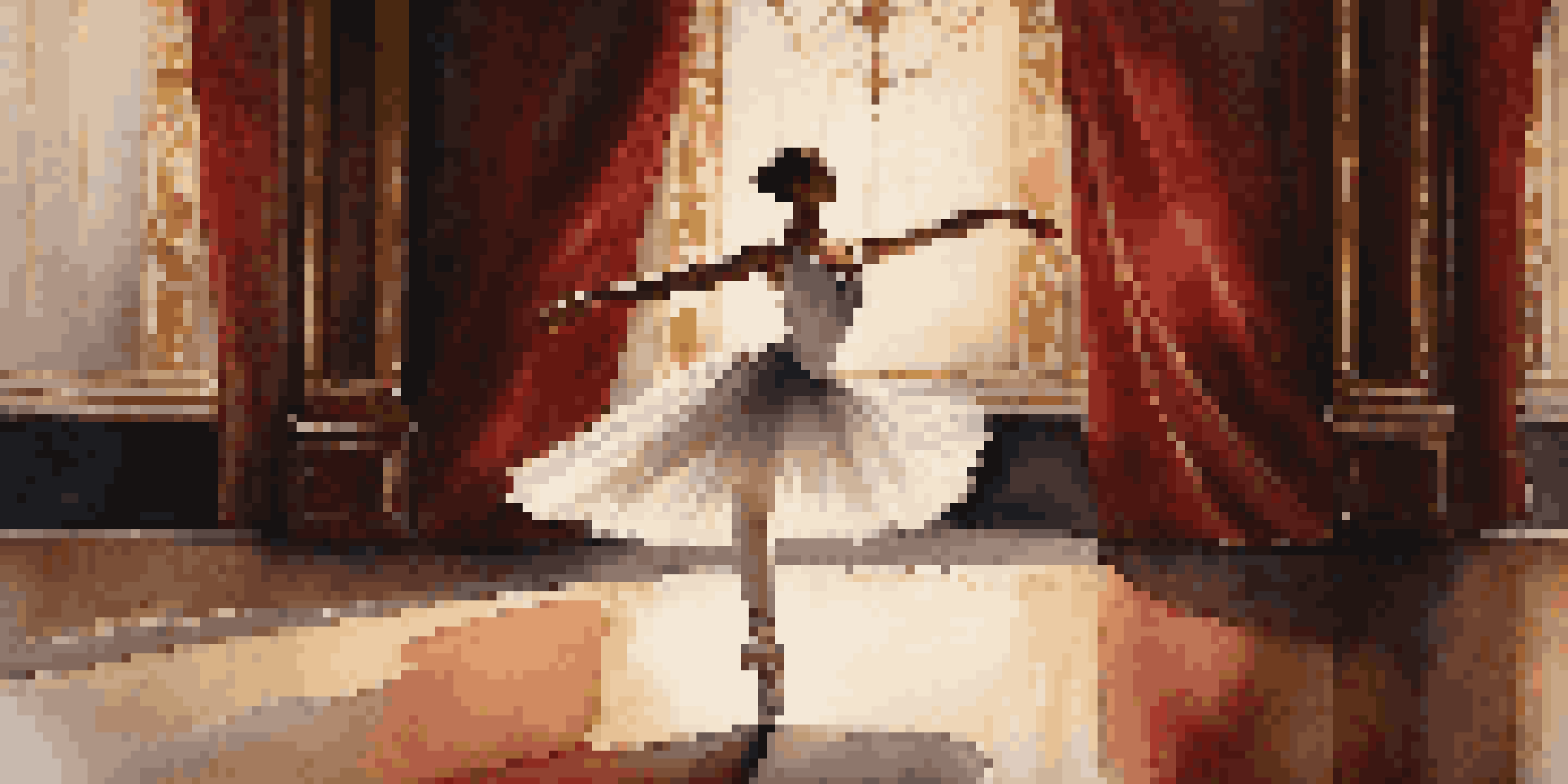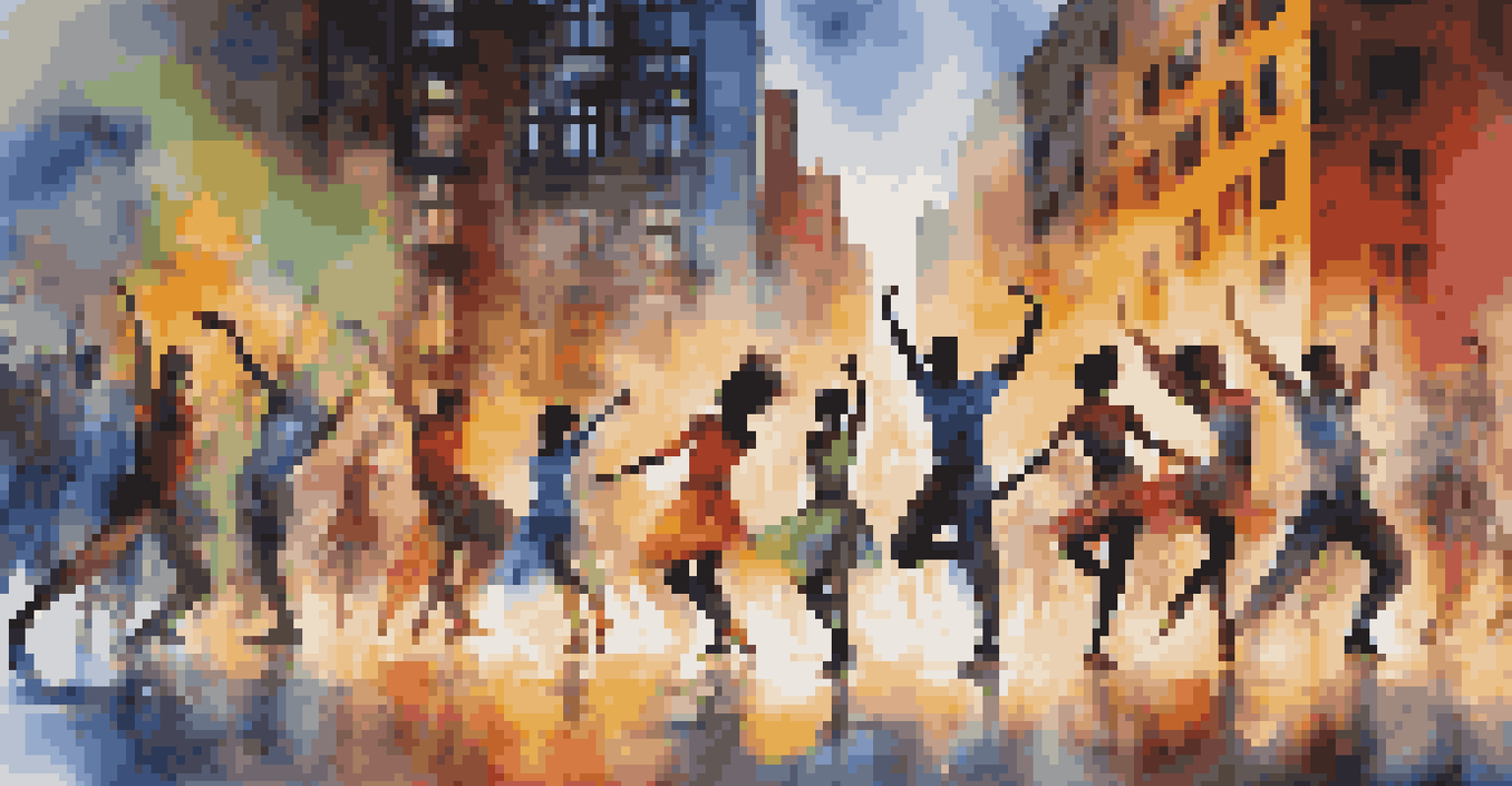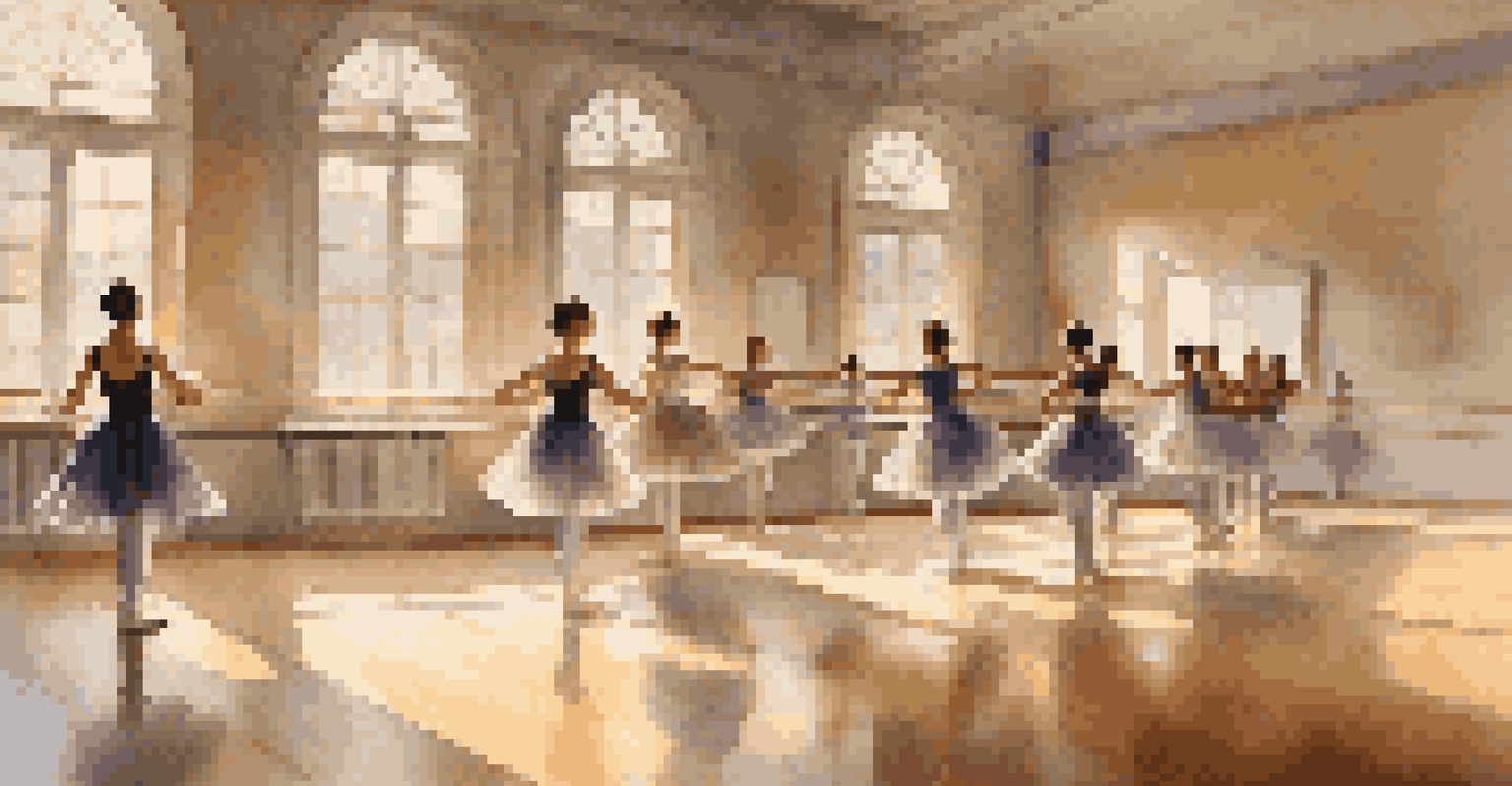The Influence of Classical Music on Ballet and Dance Forms

The Historical Roots of Dance and Classical Music
Classical music and dance have shared a rich history that dates back centuries. From the courts of Renaissance Europe to the grand theaters of today, these art forms have evolved together, influencing one another. Early ballet performances often featured compositions by famous composers like Bach and Vivaldi, setting a standard for future collaborations.
Dance is the hidden language of the soul.
The interweaving of music and movement has always been about storytelling. Dancers translate the emotions and themes expressed in classical compositions into physical form, allowing the audience to experience the narrative in a unique way. This synergy creates a dynamic atmosphere that enhances the emotional impact of both the music and the dance.
As we delve deeper into this historical relationship, we can see how various dance styles have emerged and adapted, influenced by the changing sounds of classical music. Each era brought new techniques and styles, demonstrating the adaptability of dance in response to musical trends.
How Classical Music Shapes Ballet Technique and Performance
Ballet is often seen as the epitome of dance, heavily influenced by classical music. The structure and rhythm of classical compositions provide a framework for ballet choreography, guiding the dancers' movements. For instance, the tempo of a waltz can dictate the gracefulness of a pirouette, while a fast-paced concerto might inspire agility and precision.

Moreover, classical music teaches dancers to embody the music itself, creating a harmonious blend of sound and movement. This connection is vital, as it encourages performers to express not just their technical skills but also their emotional depth. The right piece of music can elevate a performance, making it resonate with audiences on a profound level.
Dance and Music: A Timeless Bond
Classical music and dance have evolved together for centuries, influencing each other and enhancing storytelling through movement.
Choreographers often select specific compositions to complement their vision, ensuring that the music enhances the story they wish to tell. This careful selection reinforces the idea that classical music is not just a backdrop; it is an integral part of the ballet experience.
The Role of Composers in the Evolution of Dance
Composers like Tchaikovsky, Stravinsky, and Prokofiev have left an indelible mark on the world of dance, creating timeless scores that continue to inspire choreographers today. Tchaikovsky's 'Swan Lake' and 'The Nutcracker' are prime examples of how music can evoke strong imagery and emotion, enhancing the storytelling aspect of ballet.
Music is the shorthand of emotion.
Stravinsky's 'The Firebird' changed the landscape of ballet with its innovative rhythms and unconventional melodies. Such compositions allowed for greater freedom and creativity in choreography, pushing the boundaries of traditional dance forms. The collaboration between composers and choreographers has been essential in crafting memorable performances that stand the test of time.
As these influential composers experimented with new styles, they helped pave the way for modern dance forms, illustrating the ongoing relationship between music and movement. Each new piece of music opens doors for new interpretations and expressions in dance, fostering a continuous cycle of inspiration.
The Emotional Connection Between Music and Dance
At the heart of ballet and many dance forms is the emotional connection that music creates. Classical compositions often evoke a wide range of feelings, from joy to sorrow, allowing dancers to convey these emotions through their movements. This connection is what makes a performance truly captivating, as audiences can feel the intensity of the story being told.
For instance, a slow adagio set to a soft piano piece can evoke feelings of longing and tenderness, while an upbeat symphony can inspire exuberance and energy. Dancers leverage these emotional cues to enhance their performances, creating a dialogue between the music and their movements.
Emotional Depth in Performance
The emotional connection between classical music and dance allows performers to convey feelings, creating captivating experiences for audiences.
This interplay is not just about technical execution; it's about vulnerability and authenticity. A dancer who can tap into the emotional essence of a classical piece resonates with the audience, forging a deeper connection that transcends the stage.
Classical Music's Influence on Contemporary Dance Styles
While classical music has its roots in ballet, its influence extends far beyond, reaching contemporary dance forms. Choreographers today often incorporate classical elements into modern pieces, bridging the gap between traditional and contemporary styles. This blend creates a rich tapestry of movement that draws from the past while looking to the future.
Contemporary dancers utilize classical music to bring depth and complexity to their performances, often merging various genres. For example, the fusion of classical with jazz or hip-hop elements can create a fresh and dynamic experience for the audience, showcasing the versatility of both music and movement.
Moreover, this cross-pollination encourages dancers to explore their creativity and expressiveness, allowing for innovative interpretations. The result is a vibrant dance culture that honors its classical roots while embracing modern influences.
The Impact of Classical Music on Dance Education
Classical music plays a pivotal role in dance education, serving as a foundational element in training programs worldwide. Many dance schools incorporate classical pieces into their curricula, providing students with the opportunity to develop their technique and artistry. Learning to dance to classical compositions helps students grasp the essential principles of timing, rhythm, and expression.
Instructors often use classical music to teach students how to connect their movements with the music, fostering the ability to interpret various styles. This education not only hones their technical skills but also encourages a deeper appreciation for the historical and cultural significance of classical music in dance.
Classical Roots in Contemporary Dance
Contemporary dance often incorporates classical music elements, bridging traditional and modern styles while inspiring innovative creativity.
As students progress, they learn to select appropriate music for their choreography, allowing them to express their individuality while respecting the art form’s traditions. This integration of classical music in dance education creates well-rounded dancers who can navigate both classical and contemporary realms.
The Future of Dance and Classical Music
As we look to the future, the relationship between dance and classical music continues to evolve. With advances in technology and new artistic movements emerging, we can expect innovative collaborations that blend traditional elements with modern influences. This exciting fusion opens up new possibilities for choreographers and musicians alike.
Moreover, as more audiences become engaged with diverse dance forms, the appreciation for classical music is likely to grow. Dance companies are increasingly experimenting with cross-genre performances, inviting fresh interpretations of classical works that resonate with contemporary viewers.

Ultimately, the enduring influence of classical music on dance ensures that this artistic partnership will thrive for generations to come. As dancers and composers push the boundaries of creativity, they will continue to inspire one another, enriching the cultural landscape of our world.